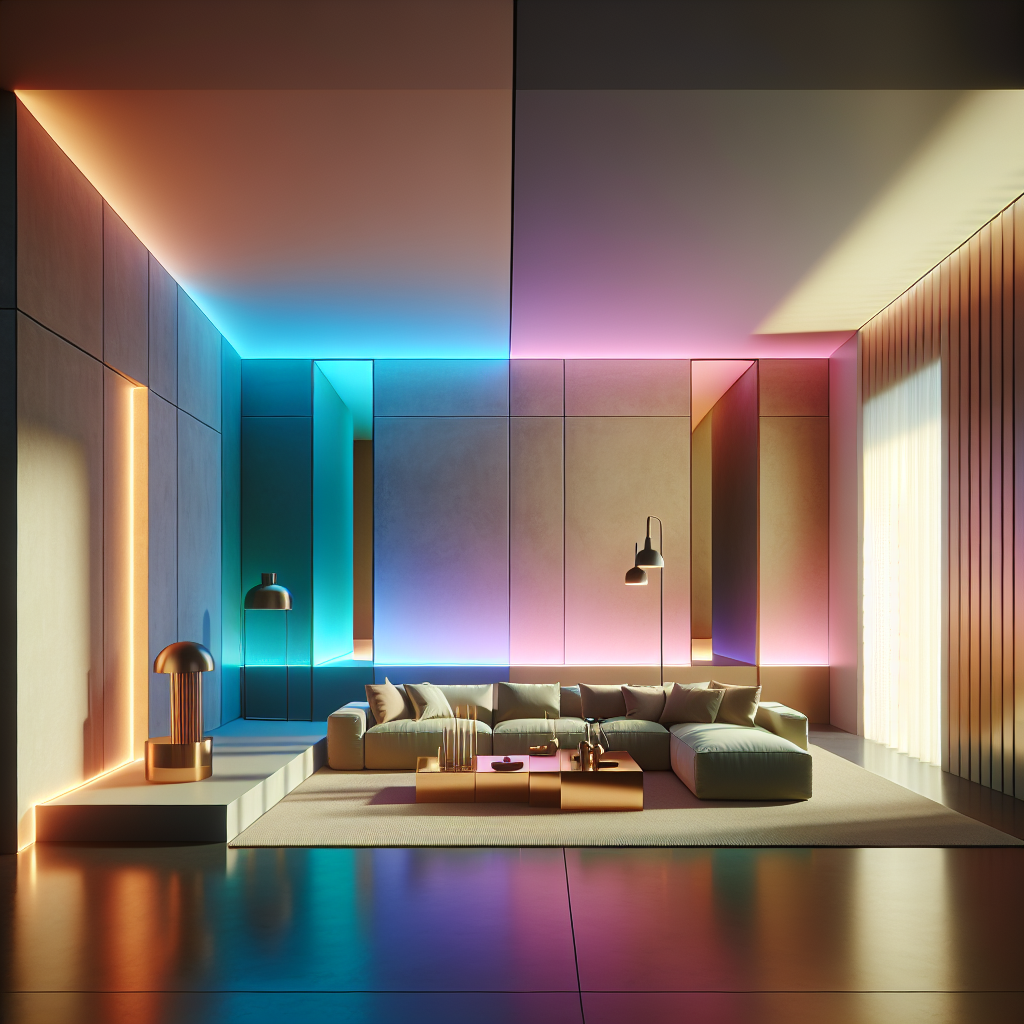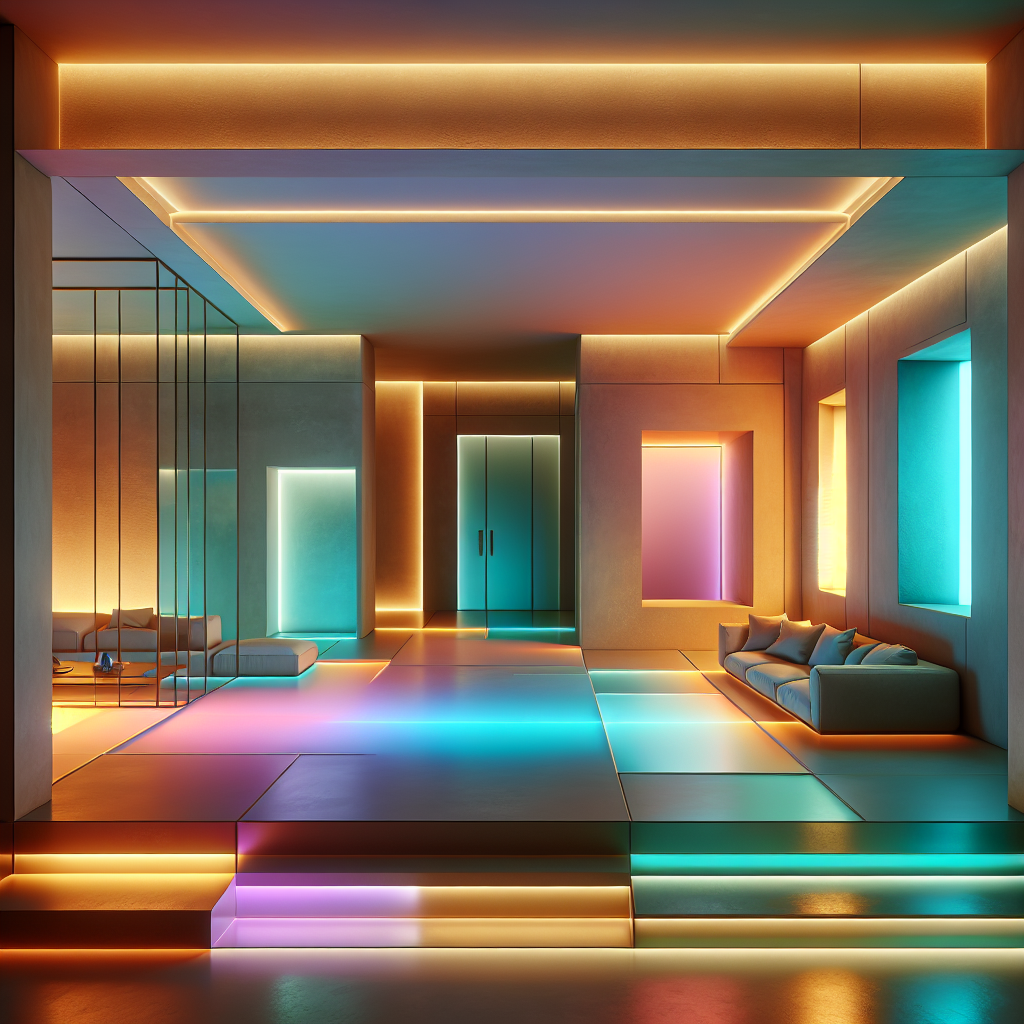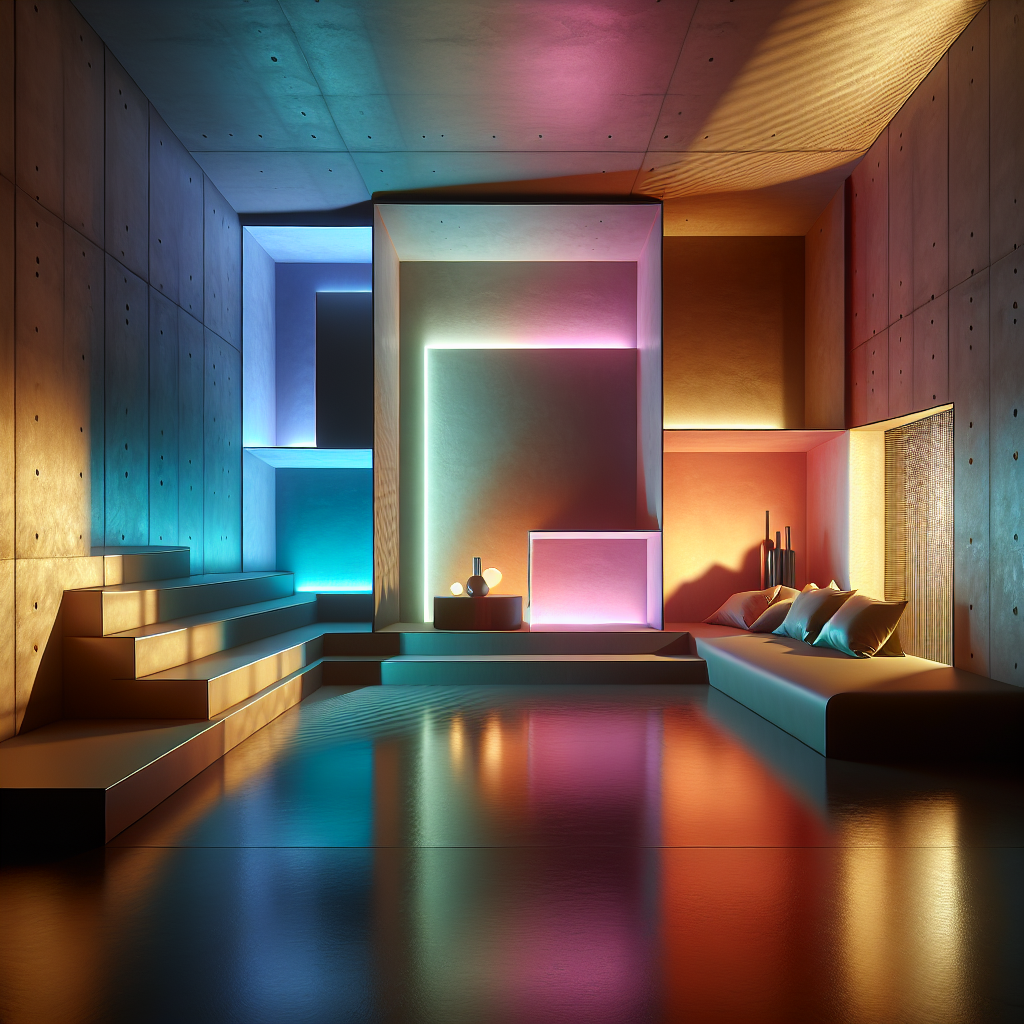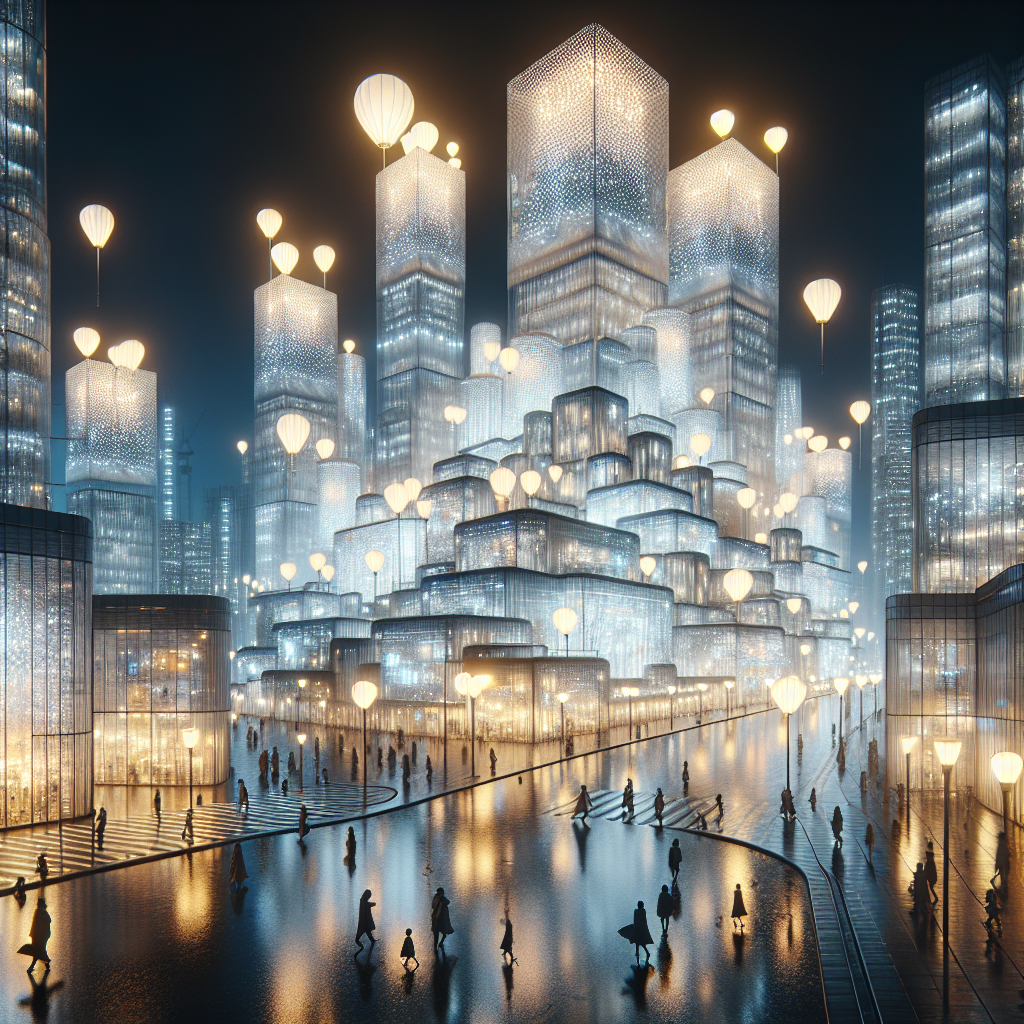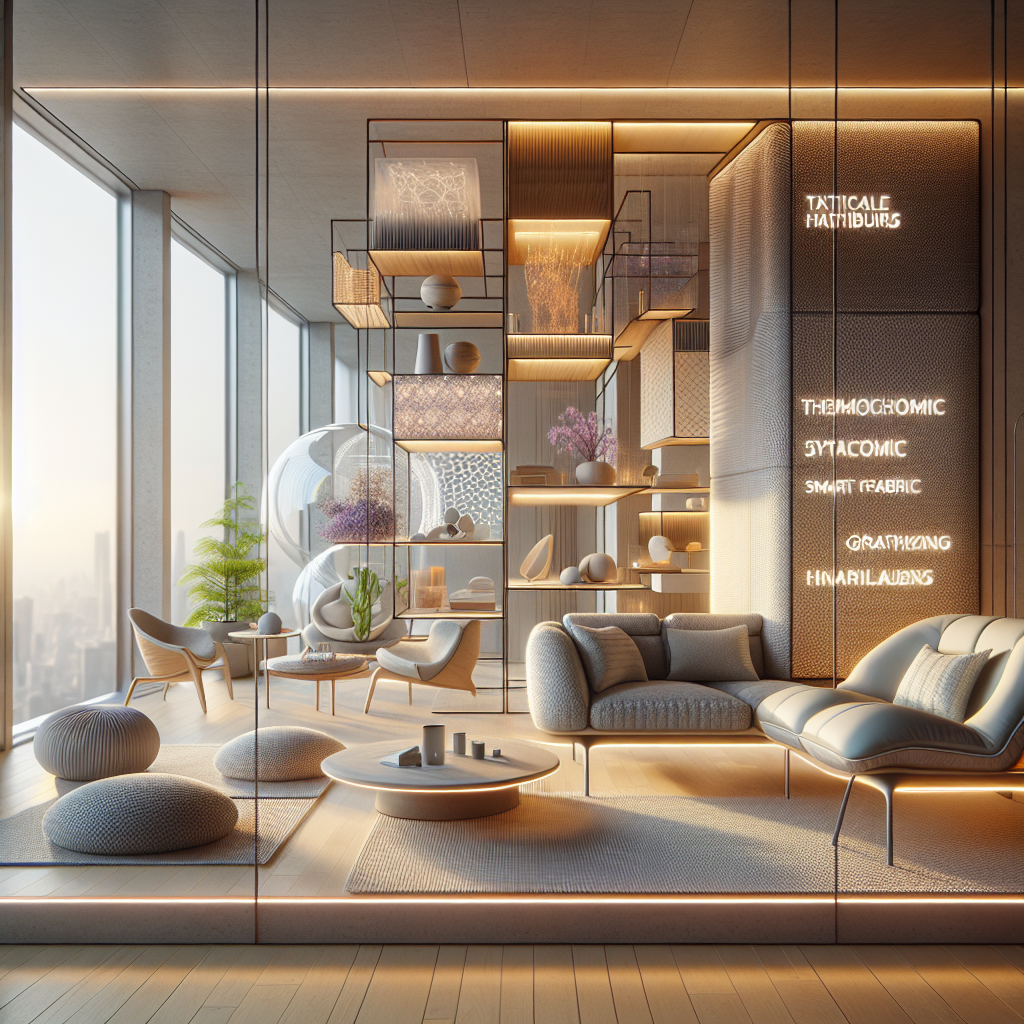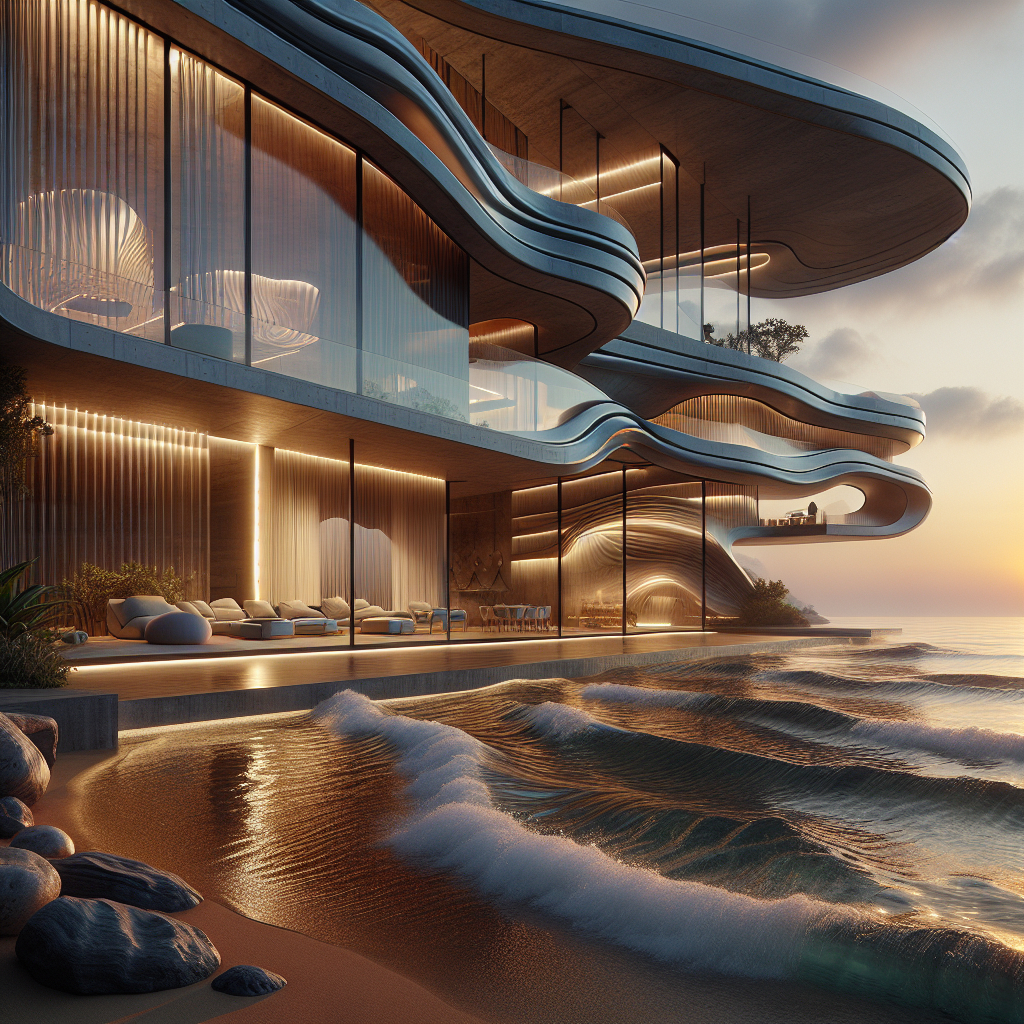Chromatic illusions in: interior lighting color-shifting LEDs for mood enhancement
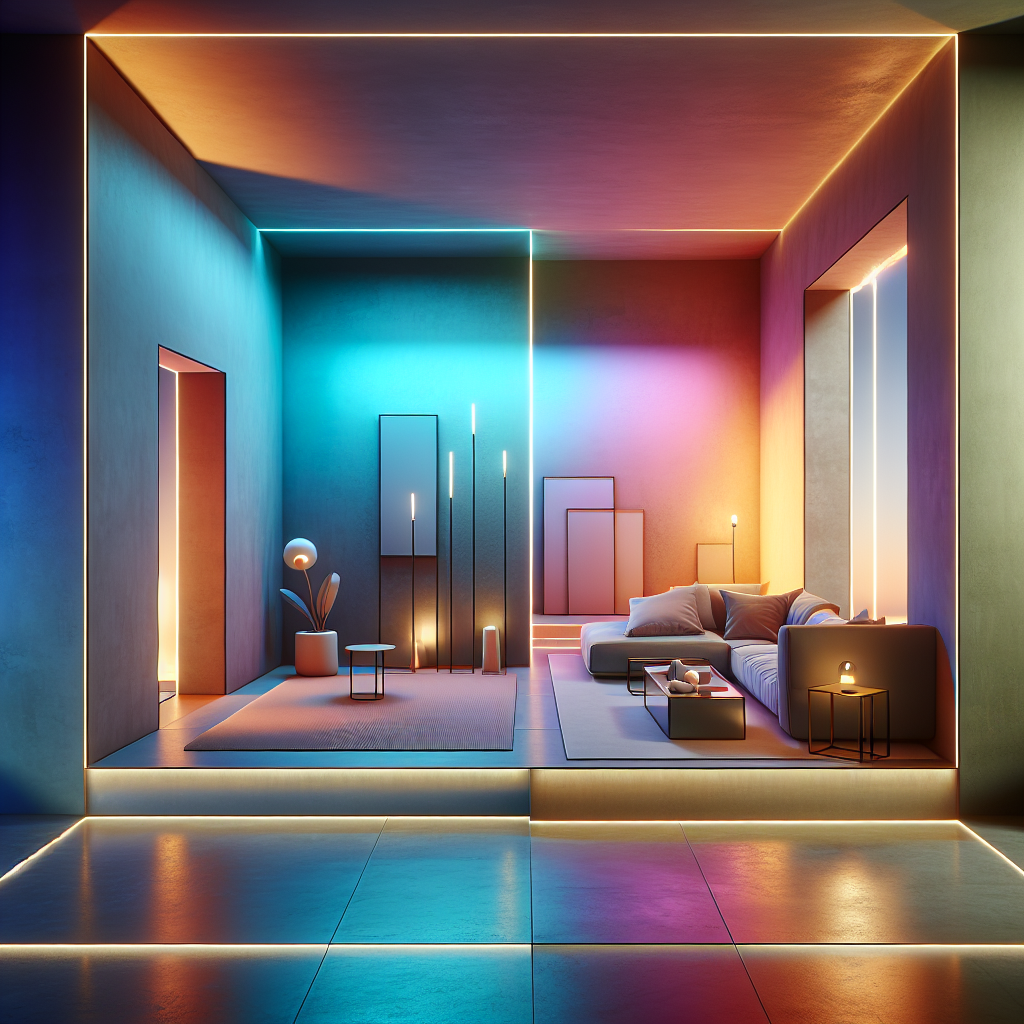
Chromatic Illusions in Interior Lighting: Color-Shifting LEDs for Mood Enhancement
In the contemporary landscape of interior design, light has transcended its utilitarian role to become a sculptural, emotional, and psychological medium. The rise of color-shifting LED lighting—capable of transforming a room’s atmosphere through subtle chromatic transitions—marks a new era in spatial storytelling. These dynamic systems, once confined to theatrical stages or high-tech installations, are now integral to luxury residences, boutique hotels, and avant-garde workspaces. As designers explore the boundaries between perception and emotion, chromatic illusions are redefining how interiors influence human well-being and behavior.
The Science of Chromatic Perception
Human perception of color is deeply intertwined with mood and physiology. Studies in color psychology have shown that warm hues such as amber and coral can evoke comfort and intimacy, while cooler tones like cyan and violet induce calm and focus. The phenomenon of chromatic illusion—where the same color appears different under varying light conditions—offers designers a powerful tool to manipulate spatial experience without altering physical materials.
Advancements in LED technology have amplified this potential. Modern tunable white and RGBW systems allow for seamless modulation of both hue and intensity, enabling environments that adapt to circadian rhythms or emotional states. In essence, light becomes a living layer of architecture—responsive, fluid, and deeply human.
Designing with Light as a Living Material
In the hands of visionary designers, color-shifting LEDs are not mere fixtures but instruments of transformation. Consider a minimalist living room where linear LED strips are embedded within architectural recesses. At dawn, the space glows with a pale, sunrise-inspired gradient; by evening, it morphs into a cocoon of deep amber warmth. This choreography of light mirrors natural cycles, subtly enhancing well-being and grounding occupants in time.
Architectural studios are increasingly treating light as a material of emotion. The integration of programmable LEDs into walls, ceilings, and even textiles echoes the philosophy of chromatic harmony—a principle that balances visual rhythm and psychological resonance. The interplay between color and form can make a space feel expansive or intimate, energetic or serene, without a single piece of furniture being moved.
Chromatic Illusions and Spatial Psychology
Color-shifting light has a profound impact on spatial perception. A narrow corridor can appear wider when illuminated with cool gradients that recede visually, while a vast open-plan lounge can feel cozier under warmer tones that visually compress the space. These optical manipulations—rooted in the study of optical illusions—allow designers to sculpt environments that adapt to both function and emotion.
In wellness-oriented interiors, this adaptability is particularly potent. A spa suite might transition from tranquil aquamarine during meditation sessions to soft rose hues during massage therapy, aligning sensory cues with emotional needs. Similarly, corporate environments are adopting circadian lighting systems that mimic natural daylight progression, enhancing focus by day and relaxation by evening. The result is a new paradigm of human-centric lighting design—one that prioritizes psychological comfort as much as visual performance.
Technological Innovation Meets Emotional Intelligence
The evolution of smart lighting systems has made chromatic control both intuitive and precise. Through AI-driven interfaces and IoT integration, users can program environments that respond to voice commands, biometric data, or even mood-detection algorithms. These innovations align with the broader movement toward smart home technology, where lighting becomes an extension of personal identity and lifestyle.
Manufacturers are now experimenting with materials that enhance the diffusion and depth of color. Micro-etched glass panels, translucent resins, and fiber-optic fabrics allow light to flow organically across surfaces, creating immersive chromatic gradients. In high-end hospitality projects, such as boutique hotels in Tokyo and Copenhagen, designers employ these materials to evoke subtle illusions—walls that seem to breathe, ceilings that shimmer like water, or corridors that dissolve into color fog.
Case Studies: Where Light Becomes Emotion
One striking example is the “Luminous Gradient Suite” at the Milan Design District, where a continuous LED ribbon traces the perimeter of the room. The lighting sequence transitions from soft dawn pinks to deep indigo nightscapes, synchronized with ambient soundscapes. The result is a multisensory cocoon that blurs the boundary between architecture and atmosphere.
Similarly, in the biophilic design movement, designers are integrating chromatic lighting to simulate natural phenomena—sunset reflections, forest canopies, or underwater glows. These illusions foster emotional connection and reduce stress, particularly in urban environments where access to nature is limited. The fusion of color-shifting LEDs with organic textures like wood, stone, and linen enhances this sense of authenticity, creating interiors that breathe with rhythm and life.
Beyond Aesthetics: The Wellness Dimension
Research from the lighting design field underscores the physiological benefits of dynamic illumination. Exposure to variable color temperatures throughout the day supports circadian alignment, improving sleep quality and cognitive performance. In healthcare and hospitality settings, this has translated into measurable improvements in patient recovery and guest satisfaction.
Designers are also exploring the intersection of light and mindfulness. In residential projects, programmable LEDs are used to create “mood rituals”—morning energizing light sequences or evening wind-down ambiances. This aligns with the growing emphasis on wellness architecture, where interiors act as active participants in mental and emotional balance. The approach resonates with the ethos of sustainable and human-centered design, merging technology with empathy.
Materiality, Reflection, and the Art of Illusion
The success of chromatic illusions depends not only on the light source but also on the surfaces that receive it. Matte plaster diffuses color softly, while polished concrete amplifies reflections into dynamic gradients. Metallic finishes—particularly brushed brass and anodized aluminum—can create prismatic effects when paired with programmable LEDs, turning static walls into kinetic canvases.
Designers are experimenting with layered translucency: perforated panels, frosted glass, and semi-transparent fabrics that filter light into subtle spectrums. These compositions evoke the poetic interplay of shadow and hue reminiscent of James Turrell’s installations, where perception itself becomes the medium. The result is an interior that shifts character throughout the day, engaging occupants in a continuous dialogue with their surroundings.
Future Directions: Emotional Architecture
As lighting design continues to evolve, the integration of AI-driven chromatic systems will deepen the relationship between emotion and environment. Imagine a workspace that detects collective stress levels and adjusts its ambient color temperature to promote calm, or a retail space that subtly alters hue to guide customer flow. These scenarios are no longer speculative—they represent the next frontier of emotional architecture.
For architects and interior designers, the challenge lies in mastering the balance between technological sophistication and sensory subtlety. The most compelling chromatic illusions are not overt displays of color but nuanced transitions that engage the subconscious. In this sense, color-shifting LEDs are not just tools of illumination—they are instruments of empathy, capable of transforming built environments into living, breathing experiences.
Illuminating the Path Forward
The convergence of chromatic illusion, neuroscience, and design innovation is reshaping the way we inhabit space. From wellness-driven homes to experiential retail and hospitality, color-shifting LEDs are redefining the emotional language of interiors. As designers continue to explore this frontier, light will no longer be seen merely as a medium of visibility—but as a profound catalyst for connection, creativity, and calm.
In a world increasingly mediated by screens and digital stimuli, the quiet power of color remains one of design’s most timeless tools. When orchestrated with intelligence and sensitivity, it can transform not only the look of a space but the very way we feel within it.
By embracing chromatic illusions, the future of interior lighting becomes not just visible—but deeply felt.
